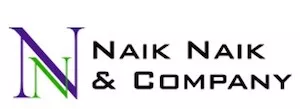Last week, YouTube unveiled its latest innovation, an AI-powered audio-cutting tool designed to assist creators in addressing copyright infringement issues by selectively removing copyrighted audio segments from their videos. Unlike previous methods that required the removal of entire audio tracks upon a copyright claim, this new tool offers creators the option to precisely edit out only the infringing portions. However, YouTube has cautioned users about potential errors that may arise from the tool's AI-driven operations, emphasizing the need for human oversight to ensure accurate utilization.
While much discourse has focused on the perceived threats of AI to intellectual property rights, little attention has been paid to its potential as a proactive tool for preventing copyright violations. YouTube's introduction of this eraser tool marks a significant step forward in leveraging AI for copyright protection. Yet, its implementation is not without challenges. This article delves into the complexities surrounding the use of AI in copyright infringement prevention, exploring necessary frameworks to maximize its effectiveness while mitigating risks.
Analyzing The Blackbox: Phenomenology Of AI
In simple terms, AI is like a computer's attempt to think like humans do. It uses complex algorithms to mimic human intelligence. Like human thinking, AI processes information in a complex manner, utilizing methods ranging from neural networks to deep learning. Despite these variations, most AI systems follow a basic four-step process: input, learning algorithm, trained algorithm, and output.
First, AI receives input by analyzing datasets like images, audio, or text using algorithms. These datasets are then processed by learning algorithms, which organize and interpret the data to create a trained algorithm. Examples include ChatGPT and other AI models capable of generating output based on human prompts or commands.
While AI simplifies many tasks, it also presents challenges. The process of training AI, where algorithms learn from data, raises concerns about potential infringement of intellectual property rights (IPR). YouTube advises creators about potential errors in AI tools like the eraser tool, underscoring the importance of human oversight for effective operation.
AI Tools For Infringement Prevention: The Challenges
The Challenge of Training AI
Training an AI involves feeding it various datasets, which may
include downloaded data, potentially raising concerns about
copyright infringement. Section 51(1)(a) of the Copyright Act, 1957
(Act) stipulates that if a person does anything which results in
the exercise of a right exclusively granted to the owner of the
copyright, then that results in an infringement. Section 14 of the
Act explicitly mentions that the reproduction of a work for storing
it in a medium by an electronic device or otherwise is an exclusive
right of the copyright holder, in the case of any kind of literary,
dramatic, musical, or artistic work. Consequently, using
copyrighted material for AI training raises legitimate
apprehensions of potential copyright infringement.
Though these apprehensions are well-founded, it might be argued
that the training of an AI can be termed fair use. Section 52 of
the Act lays down the conditions wherein an unauthorized
utilization of copyrighted content might be permitted, the section
non-exhaustively includes leveraging data for research and
ascertaining operations of a computer program.
It can be further argued that though there are creations of copies in the process of downloading, training of an AI does not necessarily involve any expression of copyrighted material, making it less likely to amount to infringement.
Possibility Of Error
YouTube acknowledges that AI tools, including their eraser tool, are prone to errors and thus require human intervention and judgment. This caution is warranted, as all AI systems currently operate with some margin for error. Blind reliance on AI could lead to the promotion of unwarranted errors, therefore such tools should be utilized with caution.
Possibility Of Biased Programming
Contrary to popular belief, AI might also fall into the trap of bias while analyzing data. AI might succumb to conformational bias if it is programmed on a very narrow data set, or selection bias if trained on an incomplete data set. Such a programming bias not only makes the AI prone to error but also creates potential for companies like YouTube to exploit these biases in favor of certain creators or companies, thus hindering the competition.
Conclusion
While the concept of replicating human intelligence in machines
has fascinated humanity for decades, recent advancements have
enabled AI to perform tasks previously exclusive to humans, such as
creating art, music, and literature. However, alongside these
capabilities come unique challenges. These include potential
copyright infringement in AI training, susceptibility to errors,
and biases that may be exploited for selfish motives.
Despite these challenges, the undeniable utility of AI warrants
careful consideration rather than excessive regulation. Innovations
like YouTube's eraser tool represent significant steps toward
harnessing AI for copyright protection. While it is crucial to
proceed with a pinch of salt and caution, we should also embrace
the move of mankind towards the dream of advanced synthetic
intelligence.
The content of this article is intended to provide a general guide to the subject matter. Specialist advice should be sought about your specific circumstances.


